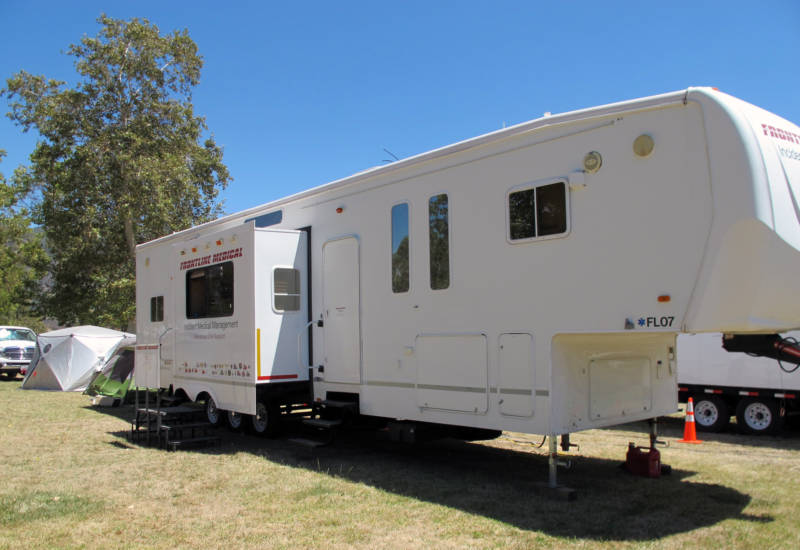Frontline Medical's trailers are like any emergency room or urgent care clinic, with bunks in the back to treat patients. The company's trailers are staged all over California during fire season so they can deploy quickly when major fires pop up.
Currently, the company, which has a contract with the Federal Emergency Management Agency for hurricanes and disasters, is on standby to go into Louisiana's flood areas. They're waiting for word to do that. They're not allowed to go in and set up until floodwaters recede and it's declared safe.
Cline said the medical unit deals with a lot of everyday stuff, from forgotten medications at home to stomach problems. There's a walk-up window where firefighters can pop in to get basics like aspirin for headaches, moleskin for blisters and antifungal cream for feet.
On the third day of the Blue Cut Fire, Cline said the clinic was busy dealing with poison oak cases -- not from this fire, but poison oak that firefighters picked up from other fires further north in the state.
"Typically, early on in the season, we're not as busy because the guys are healthier. They're not as fatigued. They have a lot more rest and they just show up healthier," Cline said.
As the fire season wears on, the firefighters come in tired, their bodies more susceptible to colds and viruses. It happens so often that colds are often referred to at fire camps as "camp crud."
The crew that staffs the trailer is made up of nurses, paramedics and EMTs. Cline said it's just like going to an emergency room, but with tele-medicine.
"It's the same setup. The only difference is the doctor is available to us via satellite and internet," Cline said. "So we can actually get him on the line. He can actually even, through video nowadays, actually even talk (to us). So we become his hands and some of the eyes, and he still becomes the decision-maker, by interviewing the patient."
Frontline Medical has been around for 17 years, now based in Graeagle, north of Truckee. Cline said they're not as busy at the fire camp as when they first started because many fire crews now have paramedics that are with the engines on the fire lines and able to treat on the spot.
But the medical trailer still is plenty busy at the fire camp, with regular hours and with someone on call 24 hours a day for emergencies.
The trailer typically is called out when a camp grows to more than 400 people, but if a fire is in a more rural area, away from services, Frontline and its counterparts can be called out when camps are smaller.
Cline said the goal is to not tax the local infrastructure with an influx of firefighters from camps that are miniature cities with hundreds and occasionally thousands of people.
"You still have a populous out there that still has their everyday stuff that they're going to the doctor for," Cline said. "If we started sending our firefighters to the local doctor, they'd get inundated."
